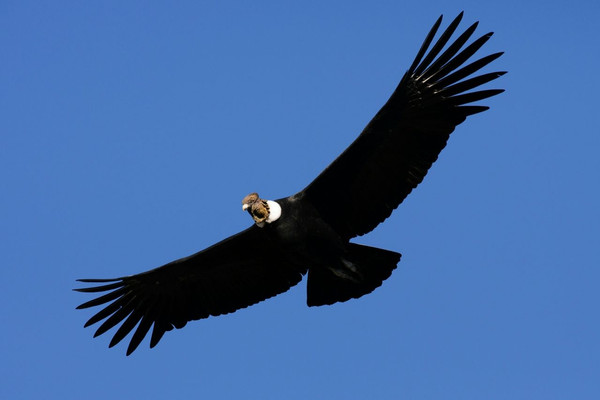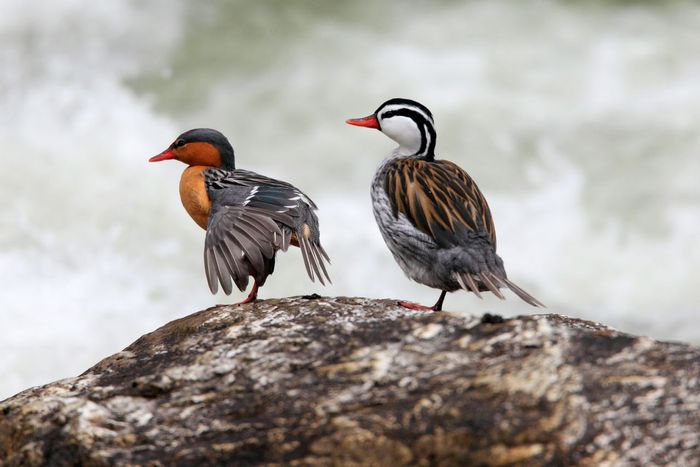Machu Picchu
Machu Picchu lies in the Andes mountains of Peru at an altitude of 2430m, to the north of the former Inca capital, Cuzco. It is a citadel that was constructed in the 15th century – it was abandoned when the Spanish invaded in the 16th century and became overgrown until stumbled upon by the American explorer Hiram Bingham in 1911. It is perched on a high mountain ridge above a sharp bend in the Urubamba River, and there is a sheer drop of 450m on three sides, making it a thrillingly scenic location. Mountains rear up all around, many of them covered with cloudforest.
Speak to Our Machu Picchu Specialist

Featured Machu Picchu Tours

Our Machu Picchu specialist recommends
"I recommend our Macaws & Machu Picchu tour where we explore the country’s most important maritime reserve, visit the ancient city of Cusco and trek to Machu Picchu. The wildlife highlight is a visit to an isolated macaw clay-lick on the upper Tambopata River."
Andy Tucker – Operations Manager
Machu Picchu's Avian & Cultural Treasures
The sheer nature of the topography helps to explain why Machu Picchu is so rich in biodiversity – about 400 species of birds and 700 species of butterflies have been recorded from the Machu Picchu Historic Sanctuary (32,592 hectares). The rule of Andean wildlife, most obviously birds, is that everything changes with altitude, which means that you can find completely different communities of animals separated by nothing more than elevation, and this is what makes it so staggeringly diverse. So, for example, a bird such as a Bronzy Inca occurs in cloudforest at 1500-2600m, while the Cordilleran Canastero is found in the well vegetated tree-line zone above 3000m – the species never meet. The eastern Andes constitute the richest place for biodiversity on earth.
Machu Picchu itself doesn’t compare to some of the richer and less touristy areas nearby (Manu National Park, for instance, which contains an incredible 1,300 species of birds), but it still enables you to get a great experience of this biodiversity, especially if you approach from the Inca Trail. The more casual visitors will still be able to see some exciting hummingbirds, for example, and with luck, there is a chance that an Andean Condor could be soaring over the nearby peaks. This magnificent and globally threatened bird is always one of the highlights of any visit to the Andes.
One of the birds you will hear, if not see, by the ruins themselves is the intriguing Inca Wren. It was only described for science in the 1980s and has a tiny range in central Peru, and nowhere else on earth. Typically for an Andean bird, it sticks to its altitudinal range, in this case 1830-3350m. Handsome, with a warm brown body and black striped head and chest, it is mainly found in stands of bamboo around the ruins, and sings a rich, loud musical phrase. Unfortunately, it is a real skulker and is very hard to see.

Other birds you might find around the ruins themselves are hummingbirds such as Chestnut-breasted Coronet, Green Violetear and Speckled Hummingbird, White-collared Swift, Blue-and-white Swallow, Blue-capped Tanager, the Maroon-chested Ground-Dove and Red-backed Hawk. However, the diversity expands immeasurably in the immediate area.
For example, most tourists arrive by train at Ollantaytambo. This is a great ride, almost all along the Urubamba River, and virtually guarantees providing two superb specialities, the White-capped Dipper and the wonderful Torrent Duck. Both are adapted to feeding in the rapids. The Dipper is, along with its close relatives, the only aquatic songbird in the world, while the Torrent Duck somehow manages to swim upriver when feeding, often underwater, but escapes danger by allowing the torrents to whisk it downstream. Look out, too, for the specialised Torrent Tyrannulet, a small grey bird that catches insects from perches on rocks and stones in the river.
Perhaps the most exciting way to approach the World Heritage Site, though, is along the 43km Inca Trail, most of which is an original Inca walkway that runs all the way from Cuzco. Some people hike the whole trail, the Mollepata, which takes five days, and this is the version we offer on our tours, but there are other, shorter trails, even a one-day hike, that we can offer as a tailormade alternative. In places the trail reaches an elevation of 4200m and overall, it covers the full gamut of habitats from cloudforest to high-altitude (elfin) forest, the well-vegetated paramo above it, sometimes dotted with cacti and bromeliads, and puna, the zone of lumpy tussocks at extreme altitude.

Each of these walking options provides fantastic opportunities for seeing the local wildlife. As well as birds, you will see rodents called Viscachas in the grasslands. You might even see a Guinea Pig, either in the wild or for sale in markets. These are considered a delicacy and are widely eaten. In fact, it is estimated that 65 million Guinea Pigs are eaten in Peru every year.
Everywhere in this part of the world are the famous camelids, each of which has specially modified pads on its toes to help it keep its grip in the steep terrain. You are bound to see herds of Llamas of many colours (there are usually some Llamas around the ruins at Machu Picchu), with a chance of seeing their wild relative the Guanaco, which is a rich, woolly honey brown. Alpacas, meanwhile, are domesticated versions of the beautiful Vicuña, the latter being the slimmest of all. You might see this species in more remote and high parts of the trail. It is found above 3200m, while Guanacos are found much lower down.
There are chances to see some superb birds on the Trail, not least at the magnificent ruins of Llactapata. Some highlights include the Giant Hummingbird, the world’s largest, which looks more like a Swift than a hummer, with its slow wingbeats. The very showy Green-tailed Trainbearer is another stunning relative, with its greatly extended, shimmering tail feathers and you might even find the remarkable Sword-billed Hummingbird, which has the longest bill relative to its body of any bird in the world – it cannot use its bill for preening and must use its feet instead. Other good Inca Trail species include Andean Condor (much more likely here than at Machu Picchu itself), Rusty-fronted Canastero, the lovely Tufted Tit-Tyrant, Black-billed Shrike-Tyrant, Hooded Siskin, Mourning Sierra-Finch, Chestnut-breasted Mountain Finch, Tit-like Dacnis and Black-throated Flower-piercer. All these are classic high-altitude Andean birds.

The Urubamba River has cut out a valley on its way from the Andes to the Amazon, and about 100km of this stretch, from Pisac, where there are also Inca ruins, eastwards to Machu Picchu, is known as the Sacred Valley of the Incas. With its rich soils and kinder climate than most of the surrounding valleys, it was settled by the Incas after about 1420. Along here are some fantastic birdwatching sites, not least the hotels downhill from Machu Picchu, which sometimes have hummingbird feeders attracting species such as Collared Incas, Green-and-white Hummingbirds and Booted Racquet-tail. They are joined by a range of colourful tanagers, such as Blue-gray, Saffron-crowned and Blue-necked, which come to fruit put out.
However, perhaps the epitome of the exotic cloudforest birds that occurs in the Sacred Valley of the Incas is the Andean Cock-of-the-Rock. The males of this stunning creature, which are crimson-red with grey and black wings, and a crest that looks like a fashionable floppy haircut, spend large parts of their day at a male-only gathering known as a lek. Males display close to each other so that any visiting females can assess their leaping and bowing and choose one bird with which to mate. The dancing occupies the early morning and late afternoon, and up to 10 of these beauties may be involved.
To see an Andean Cock-of-the-Rock lek is the experience of a lifetime for many birdwatchers. The fact that you can see this and so many other forms of wildlife within a few kilometres of one of the greatest of all man-made wonders, and somewhere you have to visit, makes Machu Picchu a compelling destination for all kinds of travellers.




 Loading search...
Loading search...







